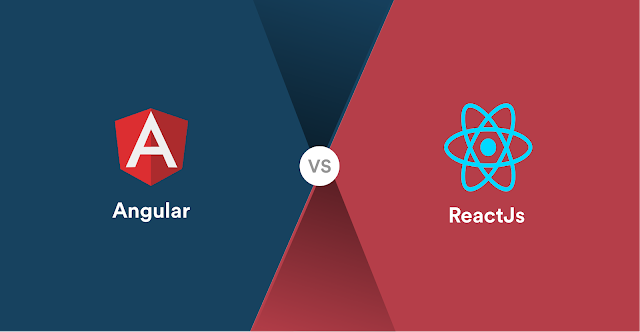Understanding The Key Difference Between Angular And React
Internet technology is one of the most vastly and quickly
expanding disciplines in the world. Being a web designer, one must develop with
the patterns in innovation. Adhering to one for a really long time or moving every
now and again would just make you accumulate more problems.
To be an expert web designer, you must have detailed
knowledge about software trends and also be able to use them efficiently. The advantages
and setbacks of a particular programming language are included in it.
React and Angular are, without a doubt, the most
successful front-end development tools. Here we are going to compare these two tools
and will point out the significant differences.
FRONT-END DEVELOPMENT
Front-end development means anything the user sees on the
screen while working. This encompasses the user interface. There are three
parts of front-end development:
·
HTML:
Used to construct the structure of your website page.
·
CSS:
Used to arrange the presence of various auxiliary components.
·
JavaScript: A the programming language used to portray the usefulness that handles all the
dynamic components on the website page.
These are the exceptionally essential things of front-end
application improvement.
So
how does Angular, a system, contrast from react, a library?
Angular
Angular is a Type Script-based, open-source front-end web
application stage. It is an MVC structure made by Google. MVC is an engineering
type for systems that create UIs. It means the Model View Controller.
Angular is a goliath with regard to making dynamic web
applications. With the arrival of Angular 5, Google included help for dynamic
web applications too.
You probably saw I didn’t utilize the word AngularJS.
That is so in light of the fact that, as of September 14, 2016, our Angular
buddies at Google delivered Angular 2, which is a finished rework of the past
AngularJS renditions.
So the adaptations underneath Angular 2 are called
AngularJS and forms above are called Angular 2, 4, 5, or essentially Angular.
React
React is a JavaScript library for building UIs. Made by
Facebook, Instagram, and the network, React is advancing at an amazingly
expanding rate. Outside of the unadulterated library itself, there are three
specific adaptations of React: React-dev tools, ReactJS.Net, and React Native.
Other than React
itself, React Native is really mainstream also for making Native portable
applications. If you are intrigued, you can look at the upsides and downsides
of React Native.
React falls somewhat short of being a JS library, yet,
when joined with different libraries, you get a ground-breaking answer for any
issue. This is the reason why React has earned its place as one of the most
formidable contenders of Angular.
The Major Differences Between React and Angular
Information Binding
Angular permits two-way information official while React
permits single direction information authoritative.
Two-way information restricting implies that any
progressions you make to the model influence the view the other way around.
Single direction information restricting methods demands
that any progressions you make to the model influence the view. However, it’s
not the opposite way around. This way, the information just streams a single track.
These are likewise called Bidirectional and
Unidirectional information streams, separately.
When you compare React Vs. Angular on this factor, Angular comes out as the better option in terms
of the flexibility it offers.
STRUCTURE OF APPS
Angular
Angular MVC structure permits applications to be
partitioned into three interconnected segments; consequently, they are simpler
to control when learned. MVC designs produce an all-around organized code that
is colossally advantageous for complex undertakings.
React
In any case, React doesn’t authorize an application
structure with someone else; it relies upon the designer. This, for a few,
could be a disadvantage or could be their weakness if they are new to the
field.
There are many other small differences, too; however, the
ones mentioned above are the most important.

You could not make a choice between React & Angular until you thoroughly realize both structures, carefully knowing each feature, advantages & disadvantages to determine which is the best development framework for the front-end. So, in this is a complete comparison guide on Angular & React that will help you to make a better choice.
ReplyDeleteUnderstanding the contrast between Angular and React is pivotal in modern web design. Angular, a TypeScript-based platform, emphasizes MVC architecture and two-way data binding, fostering structured development. React, a JavaScript library championed by Facebook, offers flexibility in UI building with its unidirectional data binding approach. While Angular provides a predefined MVC structure, React empowers developers to shape app architecture as per their needs. For those delving into mobile app development Chicago, grasping these distinctions is crucial for informed decision-making and efficient development practices.
ReplyDelete